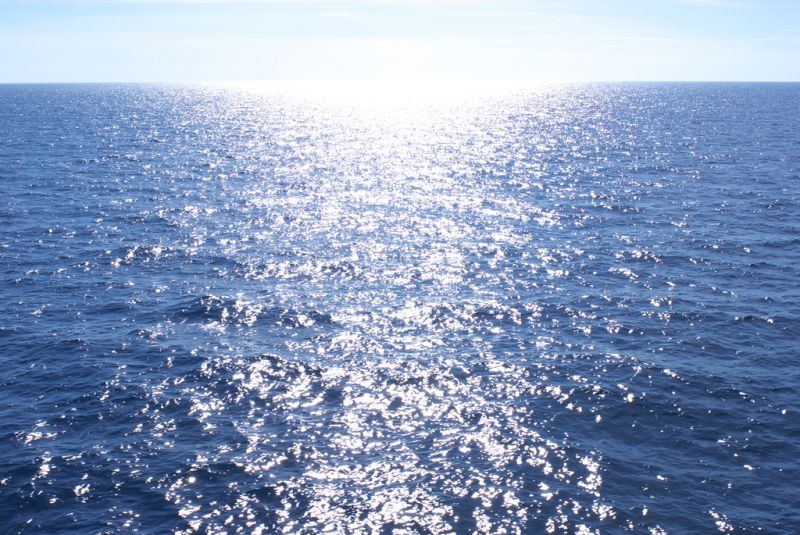Climate Change Could Decrease Sun's Ability to Disinfect Coastal Water
Published on by Water Network Research, Official research team of The Water Network in Academic
An increase in extreme rainfall makes it more difficult for UV light to kill pathogens
By Laura Snider, Senior Science Writer
One of the largely unanticipated impacts of a changing climate may be a decline in sunlight's ability to disinfect lakes, rivers, and coastal waters, possibly leading to an increase in waterborne pathogens and the diseases they can cause in humans and wildlife.

Representative image, source: Flickr
A new study published in the journal Scientific Reports outlines how a rise in the amount of organic matter washed into bodies of water can stunt the ability of pathogen-killing ultraviolet rays from the Sun to penetrate the water's surface.
Scientists have already measured an increase in "browning" of the world's waters, a phenomenon caused by more organic matter washing in from the surrounding land. This trend is expected to continue as a warming climate leads to more extreme rainfall and thawing permafrost, both of which contribute to the problem.
In the new study, led by Miami University in Ohio, researchers analyzed water samples and used a model based at the National Center for Atmospheric Research (NCAR) to quantify, for the first time, the impact of dissolved organic matter on the potential for UV radiation from the Sun to kill pathogens in the water.
"Much of the research emphasis up to this point has been on the browning itself, not the ecological consequences," said lead author Craig Williamson, an ecologist at Miami University. "We were able to determine that in some cases, browning is decreasing the ability of sunlight to disinfect water by a factor of 10. This could have serious implications for drinking water supplies and coastal fisheries across the globe."
The study was an outgrowth of collaboration among multiple scientists from different disciplines who serve on the United Nations Environment Programme Environmental Effects Assessment Panel (UNEP EEAP). The data collection and modeling used in this study were funded by multiple grants from the National Science Foundation, NCAR's sponsor.
QUANTIFYING THE IMPACTS
For the study, Williamson and his colleagues relied on water samples collected from lakes around the world, from Pennsylvania and Wisconsin to Chile and New Zealand. The water samples were tested to determine how much dissolved organic matter each contained, as well as the wavelengths of light — including ultraviolet wavelengths — absorbed by that organic matter.
Then NCAR scientist Sasha Madronich used this information as well as modeling results from the Tropospheric Ultraviolet-Visible model to calculate the solar inactivation potential (SIP) for each lake. SIP is an index of the expected disinfecting power of UV light in a particular body of water, based on its dissolved organic matter and other characteristics.
The NCAR Tropospheric Ultraviolet-Visible model — which simulates how UV light is scattered and absorbed as it passes through Earth's atmosphere — was used to determine how much UV light hits the surface of the lakes throughout the year.
Madronich also analyzed reflection and refraction off each lake's surface to calculate how much light penetrates the lakes and then, finally, how deeply it reaches.
Because scientists already have some understanding of which wavelengths of UV light do the most damage to to which waterborne pathogens, the scientists were able to use the model output to calculate the SIP for each lake. In some cases, they also calculated this measure of expected disinfecting power across different parts of, or for different time periods in, the same lake.
The results allowed scientists to quantify the impacts of dissolved organic matter. For example, the summertime SIP for one lake in northeastern Pennsylvania — which, along with other regional lakes has undergone significant browning in recent decades — dropped by about half between 1994 and 2015.
In California's Lake Tahoe, the SIP can be as much as ten times lower at Tahoe Meeks Bay, an area at lake's edge that is heavily used by humans and has a much higher level of dissolved organic matter, than in the relatively pristine center of the lake.
The scientists also showed how SIP can dramatically decrease after a heavy rainfall event, using water samples collected from the region where the Manitowoc River flows into Lake Michigan, which supplies drinking water to more than 10 million people. Modeling based on samples taken before and after a strong storm moved through on June 21, 2011, showed that the SIP may have dropped by as much as 22 percent due to the extra dissolved organic matter that washed into the area in this single storm event.
Additionally, the results for all lakes showed a significantly stronger SIP during the summer — when the Sun is higher in the sky — than winter. Lakes at higher elevations also had higher SIPs during all times of the year.
Read full article: NCAR
Read ' Climate change-induced increases in precipitation are reducing the potential for solar ultraviolet radiation to inactivate pathogens in surface waters'
Media
Taxonomy
- Water Pollution
- Ecosystem Management
- Ecosystem Management
- Pollution
- Climate Change
- Climate Change Adaptation
- Climate Change Resilience
- Water Supply
- Oceanographic Survey
- Pollution